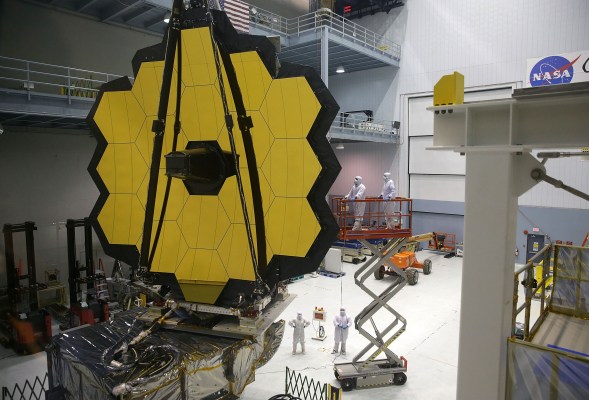Very soon, humanity will get to view the deepest images of the universe that have ever been captured. In two weeks, the $10 billion James Webb Space Telescope (JWST) — NASA’s super expensive, super powerful deep space optical imager — will release its first full-color images, and agency officials today suggested that they could just be the beginning.
“This is farther than humanity has ever looked before,” NASA Administrator Bill Nelson said during a media briefing Wednesday (he was calling in, as he had tested positive for COVID-19 the night before). “We’re only beginning to understand what Webb can and will do.”
NASA launched James Webb last December; ever since, it’s been conducting a specialized startup process that involves delicately tuning all 18 of its huge mirror segments. A few months ago, NASA shared a “selfie” marking the successful operations of the IR camera and primary mirrors. Earlier this month, the agency said the telescope’s first images will be ready for public debut at 10:30 AM ET on July 12.
One aspect of the universe that JWST will unveil is exoplanets, or planets outside our Solar System — specifically, their atmospheres. This is key to understanding whether there are other planets similar to ours in the universe, or if life can be found on planets under atmospheric conditions that differ from those found on Earth. And Thomas Zurbuchen, associate administrator for NASA’s Science Mission Directorate, confirmed that images of an exoplanet’s atmospheric spectrum will be shared with the public on July 12.
Essentially, James Webb’s extraordinary capacity to capture the infrared spectrum means that it will be able to detect small molecules like carbon dioxide. This will enable scientists to actually examine whether and how atmospheric compositions shape the capacity for life to emerge and develop on a planet.
NASA officials also shared more good news: The agency’s estimates of the excess fuel capability of the telescope were spot on, and JWST will be able to capture images of space for around 20 years.
“Not only will those 20 years allow us to go deeper into history and time, but we will go deeper into science because we will have the opportunity to learn and grow and make new observations,” NASA deputy administrator Pam Melroy said.
JWST has not had an easy ride to deep space. The entire project came very close to not happening at all, Nelson said, after it started running out of money and Congress considered canceling it entirely. It also faced numerous delays due to technical issues. Then, when it reached space, it was promptly pinged by a micrometeoroid, an event that surely made every NASA official shudder.
But overall, “it’s been an amazing six months,” Webb project manager Bill Ochs confirmed.
